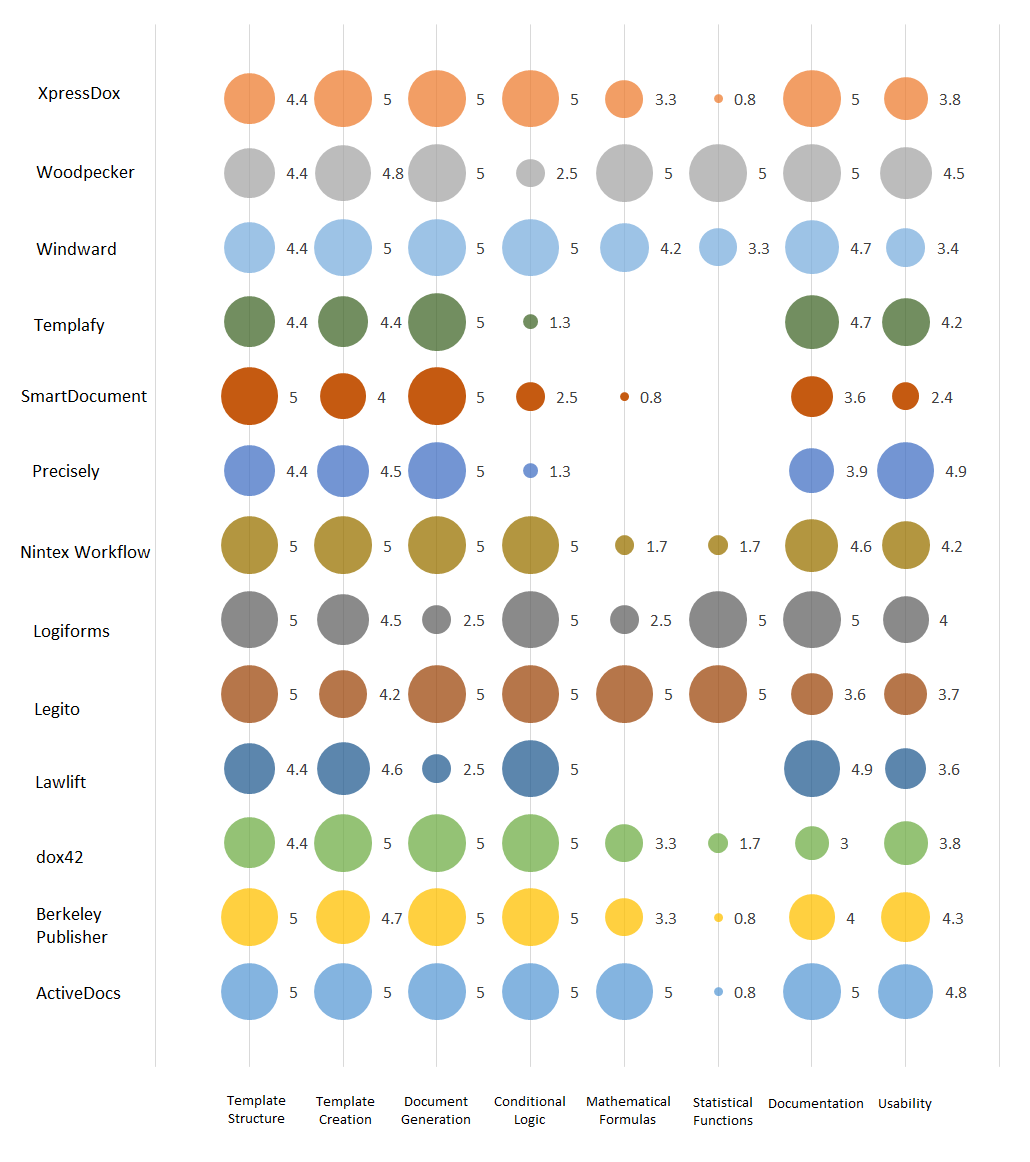The study can be downloaded here.
Legal departments in companies and government agencies are creating large amounts of legal documents every day. In many cases this process is still heavily dependent on the manual labour of lawyers and support staff. Time and resources are lost on assembling each document by copying text blocks from existing documents and manually looking up the correct document structure.
The term Document Automation describes the trend of applying software solutions to automate the generation of documents. In most cases legal documents are highly structured and the decision which paragraphs are included depends on strict rules that have been defined in advance.
The underlying logic for the document structure is usually modified only when the law changes. For this reason, there is a high potential to use document automation in the legal domain.
The market for software tools for document automation consists of many vendors that offer tools that can automatically generate documents. Some of them solely focus on document automation while others integrate this functionality into a platform for automated business processes.
The goal of this Legal Document Automation Tool Survey is to evaluate and compare tools to give practitioners interested in introducing document automation to their organization an overview of the market. Tool vendors are provided with requirements for document automation tools in the legal domain. For this reason, the study does not contain a ranking with clear winners and losers but a scorecard based on the requirements and corresponding scenarios that illustrate their practical applicability.
From the technical requirements perspective, we classified the thirteen tools into 3 groups:
Non-technical-user-oriented: tools in this category do not require users to have prior technical knowledge of software development, database, or spreadsheet for generating documents. Users can quickly and intuitively create templates, configure where dynamic data are displayed in templates, and command the tool to generate corresponding documents. These tools are Logiforms, Legito, Lawlift, Woodpecker, Precisely, and Templafy.
Technical-user-oriented: These tools require certain technical experience to use document automation features such as configuring dynamic elements in templates, inputting data sources, defining conditional logic and mathematical formulas using programming languages. Advanced users can quickly learn or leverage features of tools in this classification, yet for non-technical users, it can be considerably challenging. ActiveDocs, dox42, SmartDocuments, Windward, and XpressDox belong to this category.
Workflow-based: Users define workflows to configure their document automation process, declare template location, create a questionnaire, update dynamic elements in templates based on answers from the questionnaire, and generate documents. Although the modelling process can be an intuitive visualization for non-technical users, the actual configuration of workflow content requires certain technical knowledge, so it can be difficult at first. This issue can be addressed with the help of documentation and frequent usage of the features. Nintex Workflow and Berkeley Publisher belong to this group.
We evaluate 13 tools based on core document generation functionality as well as on supporting features, that are built around the document generation engine. The core document generation functionality is depicted in 8 distinct evaluation criteria:
The criterion Statistical Formulas evaluates the utilization of more advanced statistical operations such as exponent, logarithm, ceiling, floor, or square root in order to handle very sophisticated use cases.
The following bubble chart provides a brief overview of our evaluation based on the core functionality:

Feel free to check out our published study to dive into the more comprehensive evaluation of the core functionalities as well as the supporting features.